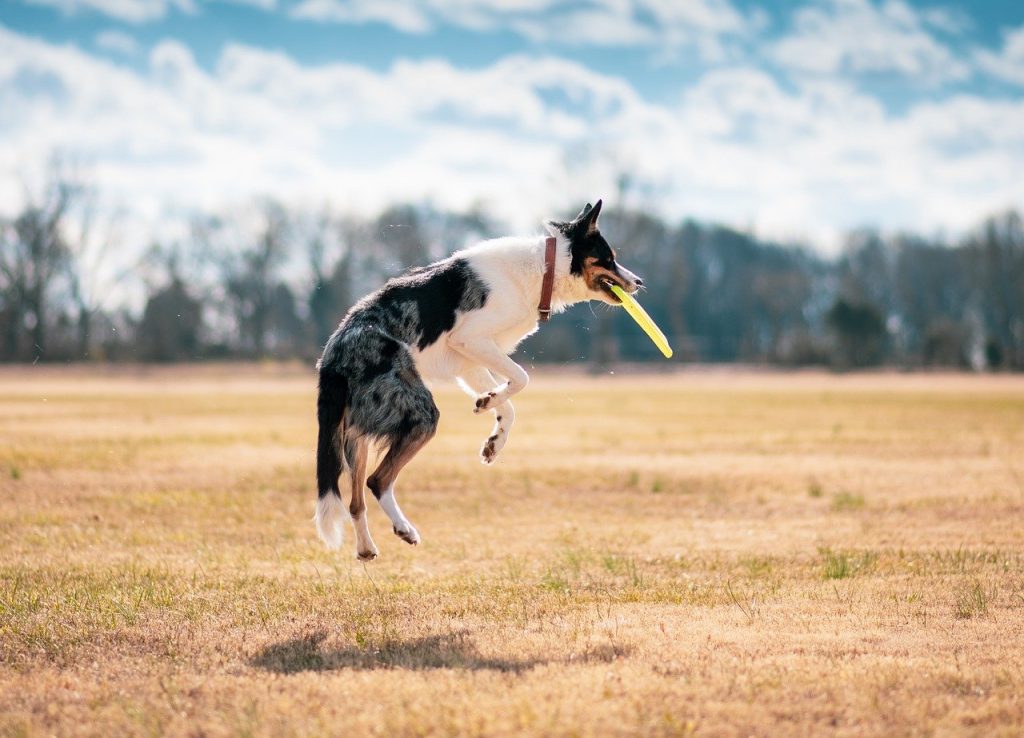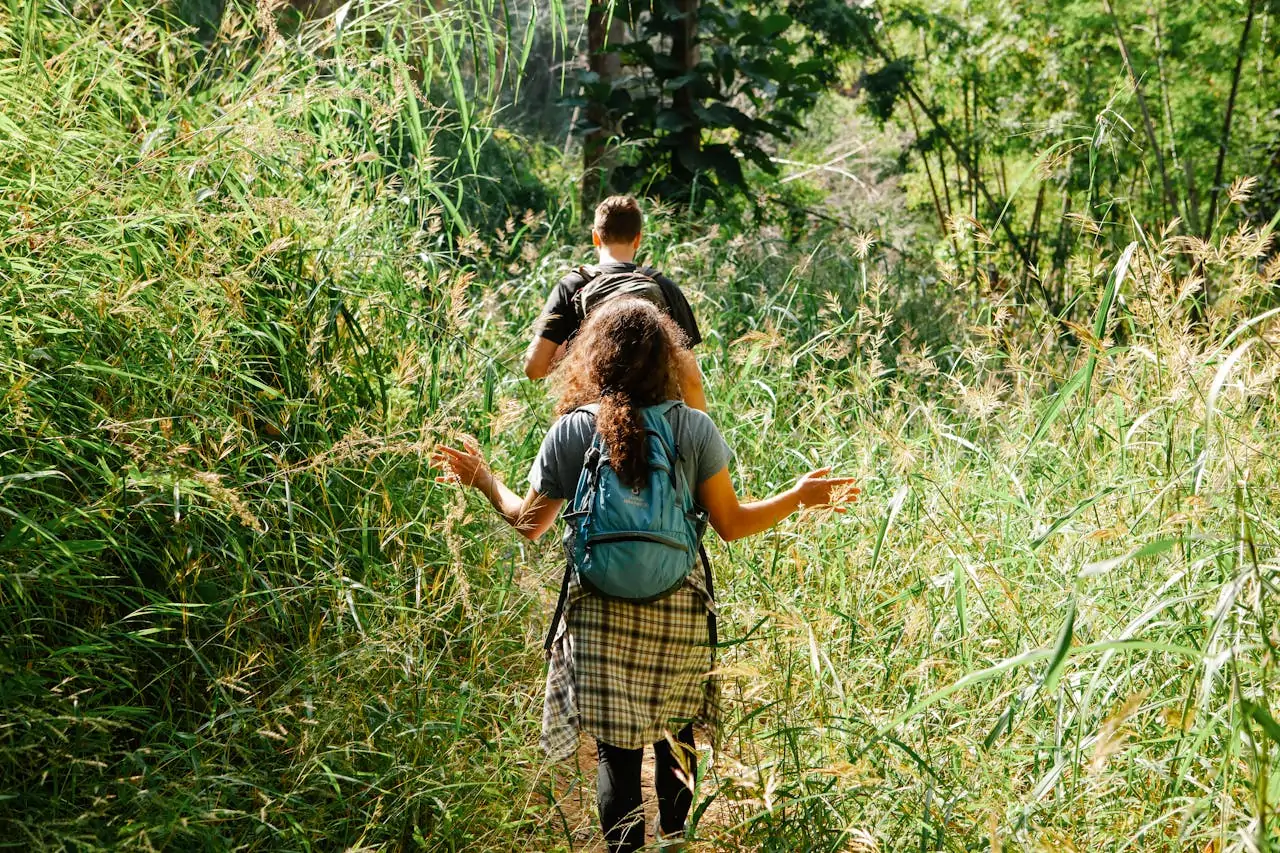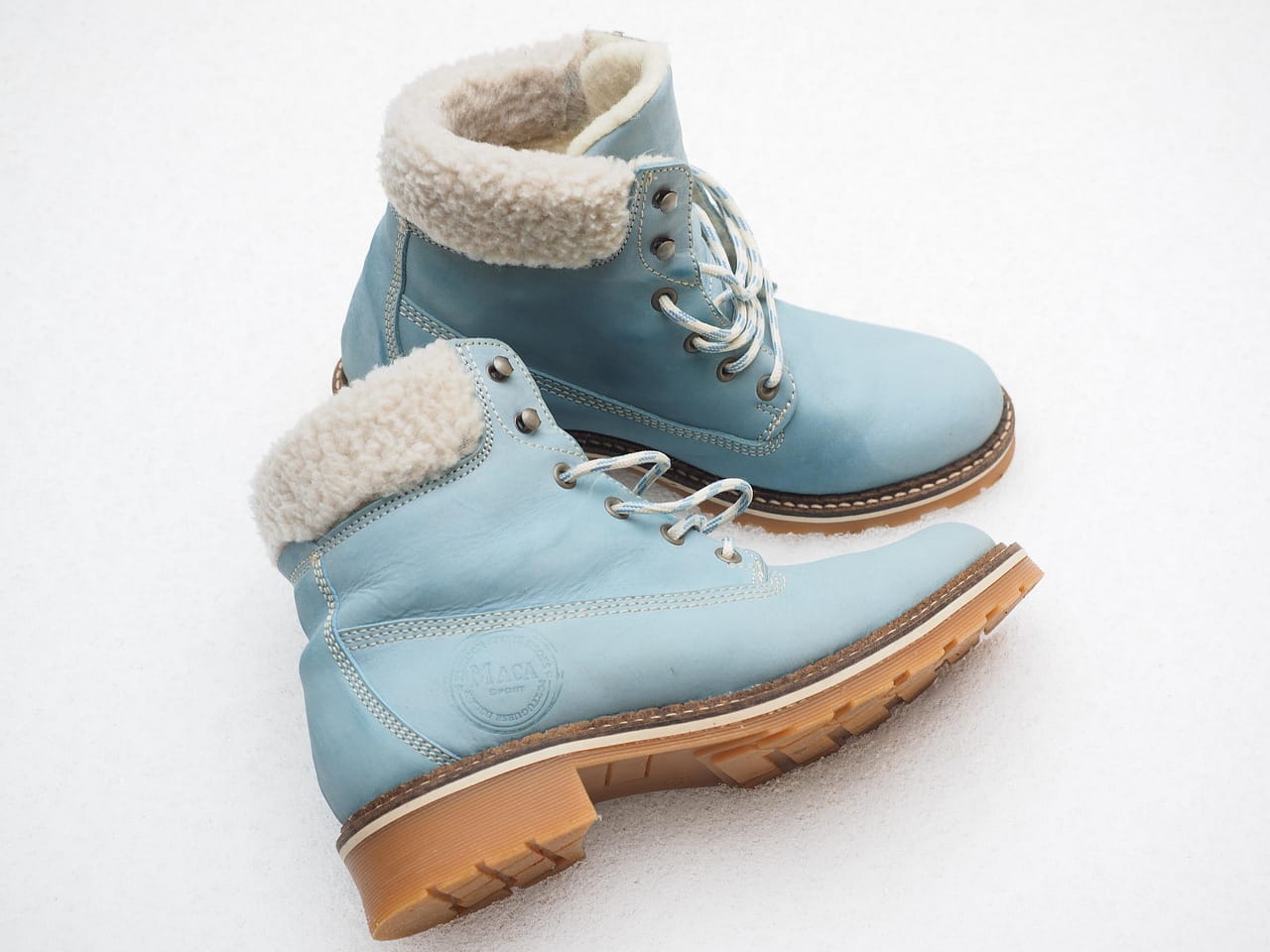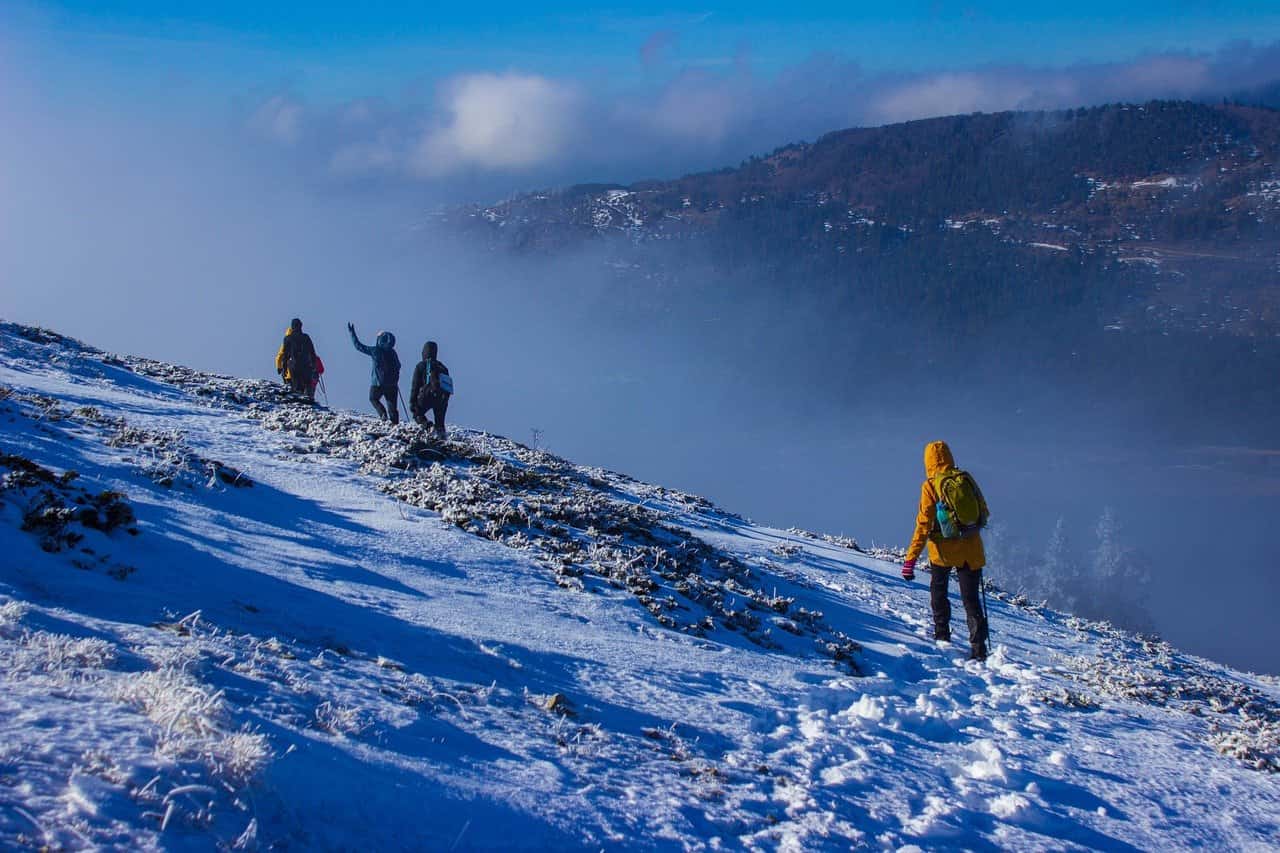Dogs love adventure, and hiking with them is a fun way to grow closer while keeping them fit and happy.
Hiking with your dog can make your time on the trail even more special, but doing it safely and responsibly is important. You need to make sure your dog listens to your commands and is comfortable and safe in all kinds of trail conditions.
In this post, I will share some important tips for hiking with dogs so you and your furry friend can enjoy your time together on the trail and stay safe.
How to get ready your dog for hiking
Before you take your dog on an adventure, think about how well-trained they are and what training they might still need. For example, it’s not a good idea to take a small, clumsy puppy on a long backpacking trip or an untrained dog on a busy hiking trail. Start with short, easy hikes and let your dog build up to your level. Just like we can’t hike 10 miles without practice, neither can our furry friends.
Your dog should learn basic commands like “come,” “sit,” “stay,” “leave it,” and “down” before hitting the trails. They should also be comfortable on a leash and might even be able to carry their own little backpack, depending on the hike.
These basic commands and training can be super important for keeping your dog safe. You don’t want them chasing after a big animal, sniffing around a poisonous snake, or wandering into a dangerous area.
When you hike with your dog, you’ll need to pack a few extra items to keep them safe and comfortable. Here are some essentials to bring along:
Water and Water Bowl
Make sure to pack a collapsible water bowl and enough fresh water to keep your dog hydrated during the hike. The longer the hike, the more water you’ll need to bring.
Leash and Harness
A strong leash and harness will help keep your dog from wandering off, especially if they catch an interesting scent and want to explore off-trail.
Treats, Poop Bags, and First Aid Kit
For longer hikes or overnight trips, pack enough dog food along with treats to keep your dog focused and close by. Bring poop bags to clean up after your dog and a basic first aid kit for any minor injuries that might happen.
Doggy Backpack
A dog backpack can help your dog carry some of their own gear, but make sure they’re used to wearing it before you start your hike.
To make sure you’re all set for a dog-friendly hike, here’s a quick checklist:
- Collapsible water bowl and enough water
- Poop bags
- Sturdy leash and harness
- Treats
- Basic first aid kit
- Dog backpack
- Enough food for longer hikes
Pack Enough Water for Your Dog
Just like you get thirsty when hiking, so does your dog. It’s really important to bring fresh, clean water for your dog in addition to what you pack for yourself.
If you don’t, your dog might try to drink from a pond, stream, or puddle, which can be very dangerous.
These natural water sources can carry harmful parasites and bacteria like leptospirosis, coccidia, or giardia, which can make your dog very sick.
When hiking, especially if it’s hot or if the hike is tough, your dog will need even more water—almost double what they’d usually drink! Make sure to pack more water than you think you’ll need. It’s always better to have extra water to prevent dehydration and heatstroke.
Preventing Heatstroke while Hiking with Your Dog
Dogs don’t sweat like we do. Instead, they cool down mostly by panting. When we’re hot on a hike, a breeze on our sweaty skin can make us feel better, but that doesn’t work the same way for a dog.
Pay attention to how much your dog is panting and if they’re stopping a lot to rest or lying down while hiking. These are signs that your dog might be getting too hot or tired and needs a break to cool down. If your dog seems extra tired, it could be an early sign of heatstroke.
Signs of Heatstroke:
- Excessive panting
- Drooling
- Bright red or dark red gums
More serious signs include:
- Vomiting or diarrhea
- Acting confused or clumsy
- Collapsing
- Losing consciousness
To help prevent heatstroke, keep an eye out for these signs, take frequent breaks, and make sure your dog has plenty of fresh, clean water. This way, you and your dog can finish your hike with a smile and a wagging tail.
Snake & Wildlife Encounters for Your Dog While Hiking
Before you head out on a hike, it’s important to know what kinds of wildlife you might encounter on the trail. That way, you’ll be ready if you come across any animals.
Dogs are naturally curious, and when they’re hiking, especially if they’re off-leash (only where it’s allowed), they’re going to explore and sniff around.
While this is normal for dogs, it also makes it easier for them to get into trouble. They don’t know to stay away from dangerous animals like snakes, scorpions, porcupines, or even bears, and might try to interact with them.
Most snake bites on dogs happen on the nose, mouth, or face because dogs often sniff around while exploring. To help prevent your dog from sneaking up on wild animals, you can attach a bear bell to their collar. This makes noise as they move, warning animals of their presence.
The best way to keep your dog safe from wildlife is to keep them on a leash and stick to marked trails. This way, you can keep your dog close and avoid them discovering wild animals on their own.
What to Do if Your Dog is Attacked While Hiking:
If your dog is bitten or attacked by a wild animal, first make sure you and your dog are safe from further harm, especially if it’s a bear or another dangerous animal that might return. Always be prepared with bear spray and other safety tools on hikes.
If your dog can walk and you’re not too far from your car, the next step is to get to your vehicle as quickly as possible and head to the nearest veterinary hospital.
Porcupines & Dogs:
If you’re an avid hiker, you might encounter a porcupine at some point. It’s a good idea to learn what to do if your dog gets quilled by a porcupine before you hit the trails. This way, you’ll know how to handle the situation if it happens.
Snake Bites & Dogs:
Snakes and hikers often share the same trails, and while most encounters are peaceful, some are not. If your dog is bitten by a snake, here’s what you should do:
- If the snake might be venomous, do not try to capture it. You could get bitten yourself, and it might bite your dog again if it gets aggravated.
- Do not tie off the area around the bite to restrict blood flow. This could cause more harm, especially with rattlesnake bites, by leading to tissue damage due to lack of oxygen.
- Try to keep the bite area below your dog’s heart, if possible. Snake bites usually occur on the limbs, so this is easier to do. If the bite is on the nose or muzzle, keep your dog’s head lower than their chest to slow the spread of venom.
- Do not try to suck out the venom. This is a myth from TV and movies, and it doesn’t actually work. Once the venom is in the body, it can’t be removed this way.
- Keep your dog calm, as they might be distressed from the bite and the pain. Staying calm can help your dog relax. Speak to them in a soothing voice to reassure them.
- If possible, carry your dog back to your vehicle and get them to the nearest veterinary facility as quickly as possible for immediate care.
Dog Hiking Injuries and Wounds
If your dog gets injured while hiking, it’s important to be prepared with a doggie first-aid kit that has supplies for treating different types of wounds, like paw pad injuries, scrapes, stick wounds, or scratches. As soon as you notice your dog is hurt, stop and take care of the injury right away.
For minor wounds, like small scratches that aren’t bleeding much or at all, you can clean the area with sterile saline and make sure your dog is comfortable before continuing your hike.
However, if the wound is deeper, might need stitches, or is bleeding a lot, clean it with sterile saline and focus on getting off the trail as quickly and safely as possible. Head back to your vehicle and take your dog to the vet as soon as you can.
If your dog has a more serious injury, like a broken leg, or can’t walk on their own, you might need to carry them out. This is a good reason to consider bringing a carryout pack, like the ones from Fido Protection, which let you safely strap your dog to your back to carry them off the trail in an emergency.
Trail Safety for Dogs: The Takeaways
Before you head out on a hike with your dog, it’s crucial to have a pet emergency plan! If your dog gets hurt by another animal or faces any of the dangers mentioned earlier, you need to know where the closest emergency veterinary facility is and how to get there. This means doing some research ahead of time, including checking if you’ll have cellphone service while hiking.
Here’s what you need to remember:
- Bring enough water for your dog to stay hydrated.
- Pack a well-stocked dog first aid kit for any minor injuries.
- Know your surroundings, location, and terrain so you can avoid potential hazards.
- Keep your dog on a leash (ideally) or at least within your sight and on the trail.
- Be aware of the wildlife in the area and the season. Are bears hibernating or out with their cubs? Are snakes active? Knowing this can help you avoid risky encounters.
By having a plan and keeping a close eye on your four-legged friend, you’ll ensure that both of you have a safe and enjoyable time exploring the great outdoors together!
Hiking Gear For Dogs
Before you head out on the trail with your dog, here are some essential pieces of gear you’ll need:
Leash
Even if you’re hiking on a trail that allows dogs off-leash, it’s still important to bring a leash. You never know when you might encounter an aggressive dog or a hiker who’s afraid of dogs.
The Ruffwear Roamer Dog Leash is a great choice because it’s made with stretchy webbing, giving your dog extra room to explore. You can also wear it around your waist, keeping your hands free.
Dog Bowl
Any small, lightweight bowl can work as a dog bowl, but if you want one that folds up small and is easy to pack, the Ruffwear Quencher Dog Bowl is a fantastic option.
It even has reflective trim, making it easy to spot when you’re packing up camp early in the morning.
Dog Harness & Pack
A dog harness like the Ruffwear Front Range Dog Harness is great for hiking. It’s foam-padded for comfort and has two attachment points: one on the back and one on the chest to help prevent pulling. It also has a small pocket for an ID and reflective trim for better visibility during late hikes.
If you’re planning longer day hikes or overnight trips with your dog, consider getting a harness with attached bags so they can carry their own food and water.
Dog Booties
Just like you wear hiking boots to protect your feet, your dog’s paws need protection too, especially on rocky or rugged trails. Pad injuries are one of the most common issues for dogs that spend a lot of time outdoors. You can keep their paws safe with a set of dog booties designed for hiking.
First Aid When Hiking With a Dog
When hiking with dogs, knowing some basic animal first aid can be really important. If your dog gets injured and you’re far from a vet, you might need to give them some initial care.
Here’s what you should know:
- Learn Basic First Aid: Ask your vet or do some research on how to perform CPR for pets.
- Know Toxic Plants: Be aware of the plants in your hiking area that could be harmful to your dog.
- Prepare for Medical Conditions: If your dog has any preexisting health issues, like diabetes or a previous injury, be ready to manage them. For example, a diabetic dog may need extra attention to their blood sugar levels, and a dog with an old injury might limp or need extra support.
Items for Your Pet First Aid Kit:
- Cotton Swabs: Useful for cleaning small wounds.
- Tick/Stinger Remover: Helps safely remove ticks and stingers.
- Hydrogen Peroxide: This can be used to clean wounds.
- Dog-Specific First Aid Kit: Consider one with a muzzle, tick removal tool, and bandages that won’t stick to fur.
Being prepared with these basics will help you manage any emergencies and keep your dog safe while you’re out on the trail.









